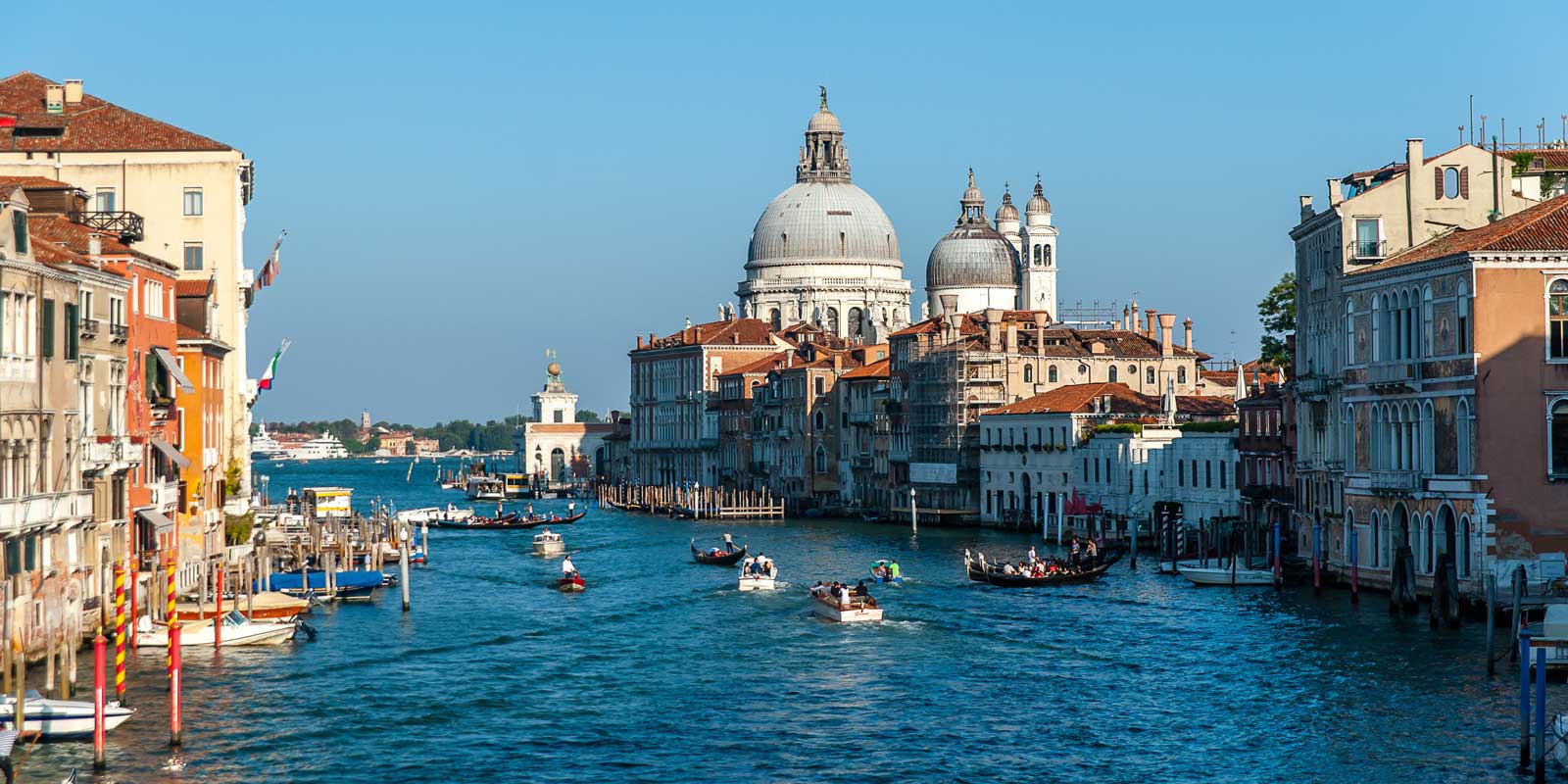The Venetian Lagoon
From the earliest times the history of Venice has also been that of the Venetian Lagoon, in an interdependent relationship. The city has been greatly influenced by the ebb and flow of the tides. The lagoon of Venice is an inland stretch of sea covering an area of 550 square kilometres, 50 km long and 8-14 km wide. The lagoon is the largest in the Mediterranean Sea and is protected from the Adriatic Sea by a chain of narrow sandy strips of land.
The long strip of land and sand stretches on the curve of Punta Sabbioni following the islands of Lido, Pellestrina and Ca' Roman, ending at Chioggia and Sottomarina. Twice a day, the tides crash through the three inlets, cleaning the waters of the Venetian Lagoon and the Venetian canals. The three inlets are called Lido di San Nicolò, Malamocco and Chioggia. There used to be four inlets, but in the mid-1700s a long Istrian stone dam was built to join the islands of Pellestrina and Ca' Roman. This modification created one of the least known but most romantic promenades in the lagoon.
These works maintained a vital balance in allowing the tides to clean the lagoon and keep out all the force of the sea. Since Roman times, with archaeological evidence in Malamocco, an attempt has been made to maintain an existential balance. Maintaining this balance has always been the primary concern of the town and the surrounding area Over the centuries many islands have disappeared, submerged by the waters and eroded, but the lagoon remains dotted with islands.
For example San Giorgio Maggiore and Giudecca are located near the south of the city. San Michele, the Isola del Cimitero and Murano, the heart of the glass industry, lie further north. Also to the north are the islands of Burano, Mazzorbo and Torcello, once an important trio of settlements. The barrier islands of Lido and Pellestrina guard the Venetian Lagoon inlets. Other important islands include the bucolic Sant'Erasmo, a large agricultural island that still provides many of the city's vegetables. San Francesco del Deserto and San Lazzaro degli Armeni, both of which are still home to monasteries. The smaller islands still in use are San Servolo and Sant'Andrea. San Servolo was once a psychiatric hospital and is now part of the International University of Venice. San Clemente with its hotel remains one of Venice's most elegant destinations.
Many of the lagoon islands are now uninhabited, due to concentration in other more productive areas, the rise of the Venetian Lagoon and other variables. In recent years, industrial development, mass tourism, large ships and other factors have undermined the delicate balance. The Venice City Council has tried to stem the rise of the lagoon by creating a system of mobile dykes called Mose, which began in 2003. It has not yet been completed. Its function is to stem the excessive inflow of water through openings in the sandbanks of the lagoon.
The lagoon ecosystem is certainly very precarious, but over the centuries it has managed to survive. Climate change will certainly not help the lagoon and its already sensitive balance.
